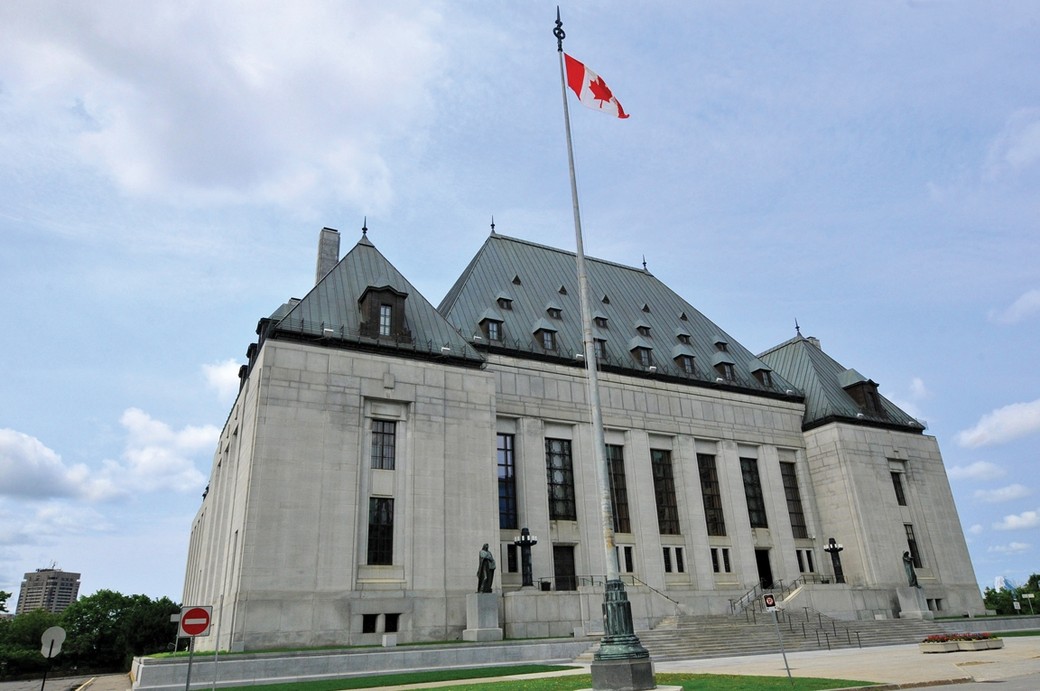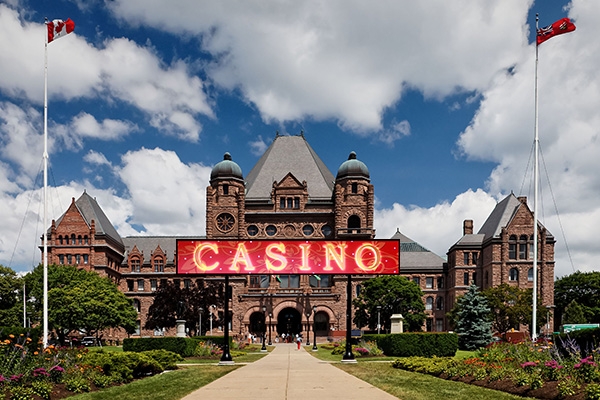
Ottawa Legal The Big Picture: Ottawa Law Firms are Amongst the Best in the World
It is the trade of lawyers to question everything, yield nothing, and talk by the hour.
— THOMAS JEFFERSON
From international media coverage of gripping court cases to the dramatic portrayals of lawyers on television and film screens, we love to watch the law. As a city that is home to some of Canada’s most respected law firms and talented lawyers, Ottawa undoubtedly plays a role in generating some of this interest. Hundreds of different types of law firms have set up shop in Ottawa, ranging from long established and internationally renowned firms, to local, new and vibrant boutique practices.
Starting at the top, Ottawa is home to the Supreme Court of Canada. It formally became the court of last resort for criminal appeals in 1933 and for all other appeals in 1949. The court was established first with six judges, and increased by one additional member in 1927. In 1949 the bench reached its current composition, of nine Justices.
The Supreme Court of Canada building was built between 1939 and 1946 from plans by noted Montreal engineer and Art Deco designer Ernest Cormier who included two candelabrum-style fluted metal lamp standards at the entrance, marble walls and floors in the grand interior lobby that contrasted with the châteaustyled roof. In 2000, it was named by the Royal Architectural Institute of Canada as one of the top 500 buildings produced in Canada during the last millennium.
The building also contains two court rooms used by both the Federal Court of Canada and the Federal Court of Appeal. The Canadian court system is pyramidal, with a broad base being formed by the provincial or territorial governments. At the next level are the provinces' and territories' superior courts, where judges are appointed by the federal government. Judgments from the superior courts may be appealed to a still higher level, the provincial or territorial courts of appeal. Several federal courts exist in Ottawa (and across Canada) including: the Tax Court of Canada, the Federal Court, the Federal Court of Appeal, and the Court Martial Appeal Court of Canada. Unlike the provincial superior courts, which exercise inherent or general jurisdiction, the federal courts’ jurisdiction is limited by statute. In all, there are over 1,000 federally appointed judges at various levels across Canada, many from the national capital region.
Each year, the Supreme Court hires 27 recent graduates from across Canada to work as law clerks providing aspiring lawyers with a privileged opportunity to work with Canada's top legal minds in the nation’s capital.
The Ontario provincial courts and Ottawa courthouse are located the heart of Ottawa at 161 Elgin St. It is not unusual to witness a flurry of media activity around these buildings, as reporters cover high-profile Canadian cases. When political figures find themselves in court, they often turn to Ottawa lawyers to defend them.
Many of Ottawa's most reputable law firms – Osler’s, Gowlings, Nelligan O'Brien Payne, May & Konyer, and Soloway Wright, are located in close proximity to the courthouse on Elgin street, some of them in heritage buildings, others in modern towers. These firms specialize in a range of areas, from criminal law to business law to estate law. With over 100 law firms dispersed throughout the city, if you need a lawyer, you’re all set.
Ottawa is also a prime destination for law students as we have the largest law school in Canada. The University of Ottawa’s common and civil law programs accept close to 400 students every year. The Supreme Court hires 27 graduates from across Canada to work as law clerks providing aspiring lawyers with a privileged opportunity to work with Canada's top legal minds.
Ottawa’s legal reputation today is a far cry from our roots as a rowdy, bawdy sawmill and lumber town.
Pre-Confederation, Bytown (as Ottawa was called then), was a scarcely populated lumber town that often erupted with violence and debauchery. Brawling was common. Lt. John By, responsible for the supervision of the construction of the Rideau Canal, was forced to reassign several canal workers to work as street patrollers. However, they had little influence or power. In 1842, fresh out of law school, 18-year-old, John Scott placed an advertisement in Ottawa's then newspaper, the Bytown Gazette. Scott would later become Bytown’s first official mayor. That same year, Bytown’s first courthouse and jail were built by architect Thomas McKay. In 1841, citizens had voted in favour of the construction of the courthouse and jail, in an effort to reduce violence and crime. Though the original courthouse and jail burnt down, the structure was rebuilt in 1871 and still stands today at the corner of Nicholas St. and Daly St.
As the legal system developed in Bytown, so did the town itself. In 1855, its name changed to Ottawa, and it officially became known as a city. In1857, it was chosen by Queen Victoria to be the capital. By 1867, Canada had officially become a country, and the British North America Act of 1867 called for the creation of a federal Supreme Court. On April 8, 1875, the bill proposing the creation of this court was officially given royal assent, and law firms such as Henderson McVeity, established in Ottawa in 1887, began opening their doors for business in the nation’s capital.
In 1857, it (Ottawa) was chosen by Queen Victoria to be the capital of the provinces of Canada. By 1867, Canada had officially become a country, and the British North America Act of 1867 called for the creation of a federal Supreme Court.
Today, Henderson McVeity is known as Gowling Lafleur Henderson LLP (Gowlings) and is the second largest law firm in Canada with offices in Beijing, Moscow and London. Its Moscow office was one of the first Western law firms on the scene in post-Soviet Russia and the firm sent a young talented lawyer named Monique Couture to lead the charge in what was then the wild west of new Russia. Her work there is still paying dividends for the firm's reputation today.
There are several Ottawa firms with an international presence. Cassidy Levy Kent’s main offices are located in Ottawa and Washington, Blake Cassels and Graydon has offices in Ottawa, Vancouver, New York, Chicago and London, and Osler has headquarters in both Ottawa and New York City, just to name a few. Osler has been in the business of law since 1862, when Bath Osler began to practice law in Dundas, Ontario (70 km west of Toronto). By the age of 23, Osler had opened two law offices (Dundas and Hamilton) and started his own venture in what would become one of North America’s first commuter railways. In 1882, Osler moved his practice to Toronto, the provincial capital and at the time Canada’s second most important city for business, after Montreal. Within a decade, the enterprise grew to become one of the top three law firms in Canada and it would eventually set up shop in Ottawa. Almost from the start, the firm’s clients included many of the country’s largest companies and others that would grow to become leaders in key emerging industries including railways, banking and insurance, manufacturing and natural resources. As the firm prospered, it attracted international companies seeking opportunities in Canada. Osler's has been ahead of the game in promoting women in a sector that was far too long known for having a glass ceiling for women. In 1968, Osler became the first large corporate law firm in Canada to admit a woman as a partner, Bertha Wilson, who went on to become the first female Justice appointed to the Supreme Court of Canada.
Other firms in Ottawa have had similar success while remaining true to their Ottawa roots. Nelligan O’Brien Payne LLP was founded in the capital in 1963 and the mid-sized general practice firm has kept Ottawa as a home base, with an additional presence in Alexandria, Kingston and Vankleek Hill. The firm and its lawyers have an exceptional and decades long record as active participants in the community, and support a wide variety of volunteer and locally based activities including the Terry Fox Run, the United Way campaign, the Ronald McDonald House Ski Day, and various other fundraising activities throughout the year. They also support numerous community events through sponsorships or donations and host the annual Lawyers Play where the musical and dramatic talents of their lawyers are put on display at the Great Canadian Theatre Company.
Nelligan has received an A+ rating from Ottawa’s Better Business Bureau. Real estate and business law firm Soloway Wright, established in Ottawa in 1945, prides itself on being a community-based firm, with locations in both Ottawa and Kingston. The firm is centered on community involvement, and has been recognized for its philanthropic efforts.
Though some of the city’s historical firms have been growing since Confederation-era Canada, others in Ottawa have only just recently opened but are prospering. LaBarge Weinstein LLP, opened in 1997, specializes in knowledge-based and technology companies, while the 20-year-old firm, Sicotte Guilbault LLP, is another growing vibrant general practice firm. From global to local, from old to new, Ottawa’s range of law firms suggests that the national capital region has become a hub for both experienced lawyers and aspiring ones.













